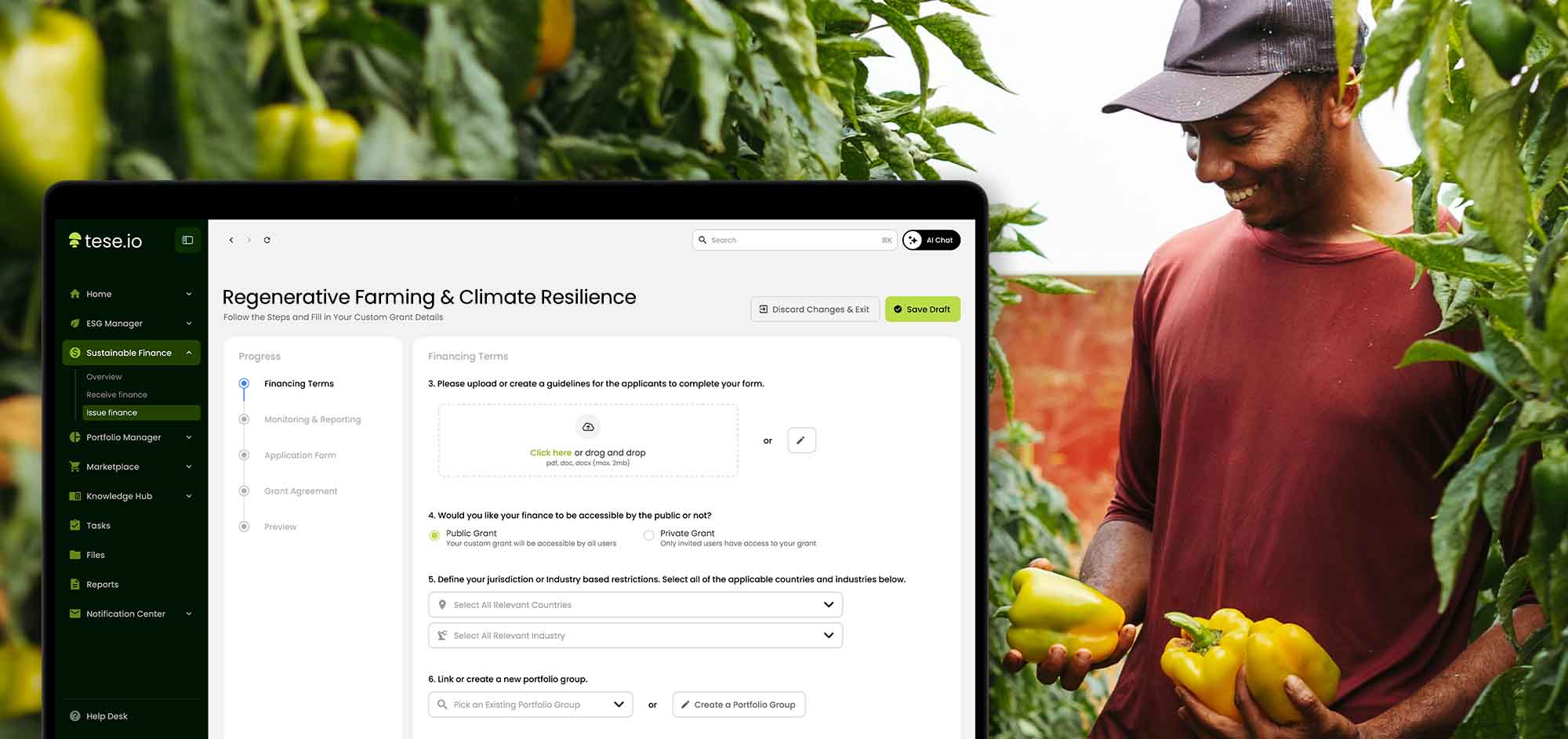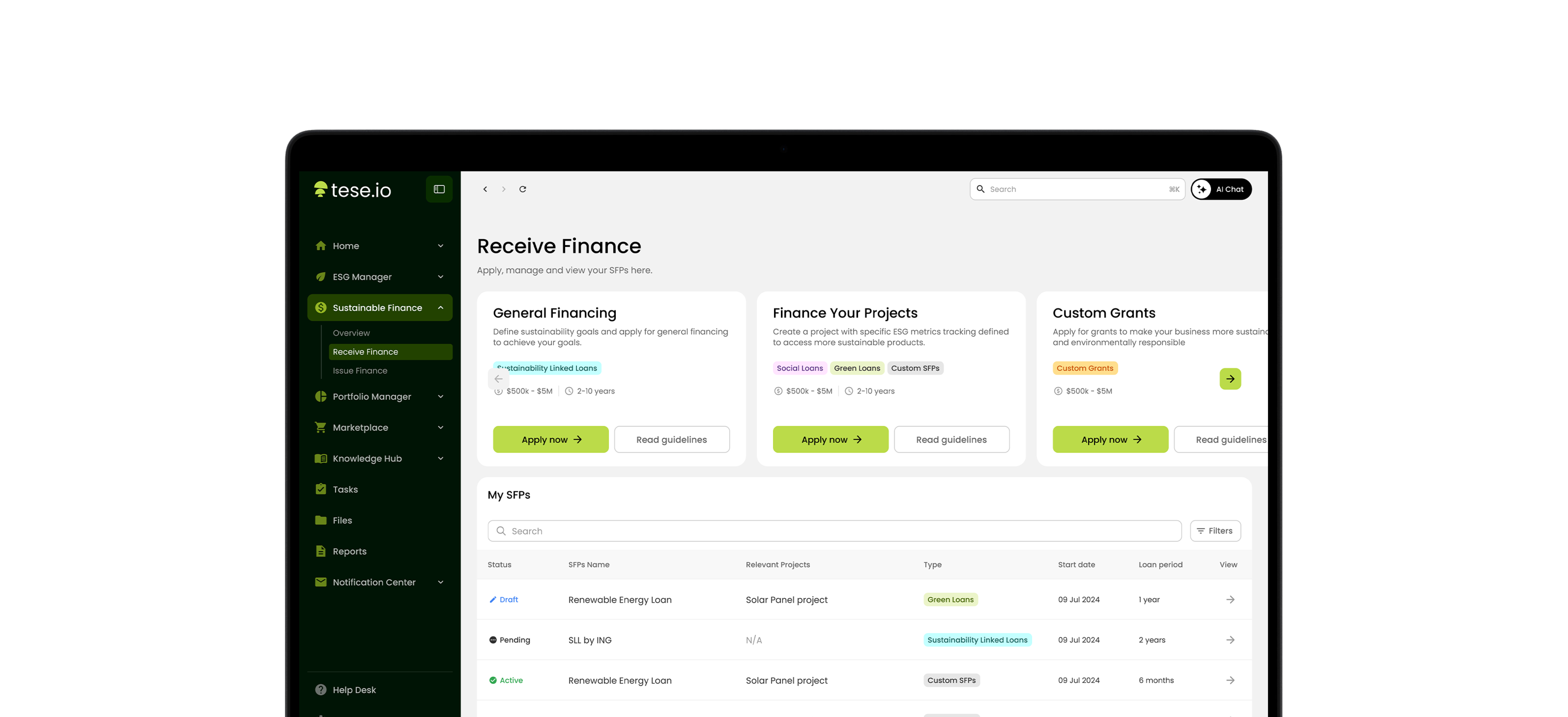How a UK Grantmaker Could Use Tese.io to Verify Regenerative Impact at Scale
October 24, 2025

This case study is fictional and intended to demonstrate how Tese.io’s platform can be applied by corporate foundations, donors, and NGOs to strengthen climate and sustainability grant programs.
When the fictional AgriResilience Foundation set out to fund regenerative agriculture projects across the United Kingdom, it faced a familiar challenge for many corporate grantmakers: how to measure and verify on-the-ground results at farmer level.
The foundation’s imagined Regenerative Farming & Climate Resilience Grant Program was designed to empower smallholders to adopt practices like composting and cover cropping. But in practice, NGOs and donors alike often struggle to track how training translates into measurable improvements in soil health, biodiversity, or carbon sequestration.
This scenario illustrates how a grantmaker like AgriResilience could use Tese.io to move from paper-based reporting to verifiable, data-driven impact management.
The Challenge: Turning Good Intentions into Measurable Outcomes
In most real grant cycles, reporting remains fragmented. Field NGOs submit spreadsheets and PDF reports with varied data quality. Donors often rely on anecdotal updates or static dashboards, with limited ability to validate field evidence or link funding to specific environmental outcomes.
For a program like AgriResilience’s hypothetical $5 million regenerative agriculture fund, the key barriers would be:
- Limited ability to standardise KPIs across grantees
- No unified place to collect and verify evidence (photos, lab tests, attendance sheets)
- Difficulty connecting training activities to tangible results such as soil organic carbon gains or land restored
What the Program Could Look Like on Tese.io

1. Grant Creation
Using Tese.io’s Grant Builder, the foundation could design its funding call directly on the platform, defining measurable key performance indicators (KPIs) from the outset:
- Number of farmers trained
- Hectares under regenerative management
- Change in soil organic carbon levels
The Grant Builder would standardise evidence requirements and deadlines, ensuring that all applicants report using the same metrics.
2. Application and Review
NGOs could then apply through the Application Portal, submitting proposals, budgets, and baseline data.
For instance, an implementing partner might apply for a $200,000 grant to train 500 maize farmers in composting and cover cropping. The donor could review applications, assess prior evidence, and approve awards directly within the platform.

3. Implementation and Evidence Collection
Once a grant is awarded, implementing partners would use File Manager and the Evidence & Audit Module to upload:
- Attendance records and field photos
- Training materials and curriculum
- Soil testing certificates and farmer survey data
Each evidence upload would automatically update linked KPIs, allowing both the donor and grantee to track progress in real time.
Example: halfway through implementation, 350 of 500 farmers trained; average soil organic matter up 0.4%.
4. Verification and Reporting

External auditors could be granted secure access to review and validate evidence directly on-platform, minimsaing administrative back-and-forth.
At project completion, the Portfolio Manager could aggregate verified data to produce a consolidated report for the entire grant portfolio:
- 500 farmers trained
- 1,200 hectares managed under regenerative practices
- 1,800 tonnes of CO₂ sequestered (estimated) over five years
What This Demonstrates
While AgriResilience is fictional, the workflow mirrors what’s now possible for real-world funders, DFIs, and NGOs.
By using Tese.io, grantmakers can:
- Replace fragmented reporting with standardized digital workflows
- Automatically connect evidence uploads to predefined KPIs
- Reduce verification time through built-in audit trails
- Produce credible, impact-linked reports for ESG and donor disclosures
Instead of relying on manual spreadsheets and quarterly emails, donors can view verified field progress in real time, turning sustainability grantmaking into a transparent, data-driven process.
A Model for the Future of Impact Verification
This example shows how corporate foundations and development partners could evolve from passive funders into active stewards of measurable climate outcomes.
By integrating data, evidence, and financial tracking into a single digital ecosystem, Tese.io offers a pathway for ensuring that every pound invested in regenerative agriculture leads to traceable, verifiable change on the ground.
